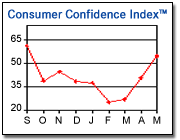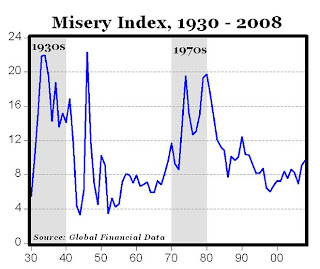An excerpt from Ben Bernanke’s speech at the University of South Carolina Commencement Ceremony, Columbia, South Carolina, May 8, 2010:
Notwithstanding that income contributes to well-being, the economics of happiness is also a useful antidote to the tendency of economists to focus exclusively on material determinants of social welfare, such as the GDP. GDP is not itself the final objective of policy, just as an increase in income may not be a good enough reason for you to change jobs. Obtaining broader measures of human welfare is challenging, but not impossible…
But even though GDP or income should not be the only goal of our strivings, we can go one step further and recognize as well that happiness itself, at least to the extent that the term is associated with immediate rather than long-lasting feelings and emotions, should not be our only goal either. Remember that I began by distinguishing between happiness and life satisfaction. Happiness is just one component of the broader, longer-term concept of life satisfaction, and only one indicator of how the fabric of our lives is being shaped by our choices and circumstances.
I am reminded of a story about Abraham Lincoln. According to the story, Lincoln was riding with a friend in a carriage on a rainy evening. As they rode, Lincoln told the friend that he believed in what economists would call the utility-maximizing theory of behavior, that people always act so as to maximize their own happiness, and for no other reason. Just then, the carriage crossed a bridge, and Lincoln saw a pig stuck in the muddy riverbank. Telling the carriage driver to stop, Lincoln struggled through the rain and mud, picked up the pig, and carried it to safety. When the muddy Lincoln returned to the carriage, his friend naturally pointed out that he had just disproved his own hypothesis by putting himself to great trouble and discomfort to save a pig. “Not at all,” said Lincoln. “What I did is perfectly consistent with my theory. If I hadn’t saved that pig, I would have felt terrible.”
The story points out that, sometimes, happiness is nature’s way of telling us we are doing the right thing. True. But, by the same token, ephemeral feelings of happiness are not always reliable indicators we are on the right path. Ultimately, life satisfaction requires more than just happiness. Sometimes, difficult choices can open the doors to future opportunities, and the short-run pain can be worth the long-run gain. Just as importantly, life satisfaction requires an ethical framework. Everyone needs such a framework. In the short run, it is possible that doing the ethical thing will make you feel, well, unhappy. In the long run, though, it is essential for a well-balanced and satisfying life.




